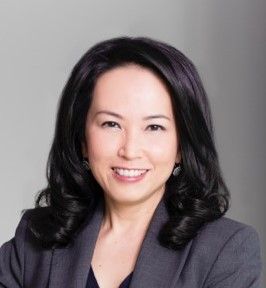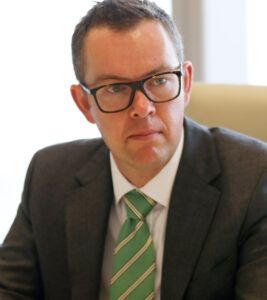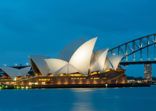Upbeat on Asia’s prospects.

The headwinds that are weighing down financial markets – such as supply bottlenecks, rising energy prices, and China’s regulatory uncertainty—should ease in 2022, and rapid vaccination progress should allow economies to reopen more fully in 2022.
Asia’s economic recovery is confronting various challenges, but while the expansion is likely to slow in 2022, we expect another year of above-trend growth. With reopening momentum gaining pace, the backdrop is supportive for risk assets. Inflation is a concern, but we only see mild monetary tightening in the year ahead.
It’s been a rough year for Chinese equities, but we think the worst may be over and see mid-teen upside for the MSCI China index. As headwinds start to abate, opportunities are emerging in China’s new economy sectors for investors with a long-term mindset.
For fixed income, although China property fundamentals remain weak, we think policy fine-tuning will eventually shore up sentiment for Asia high yield. We recommend diversified exposure to Asia high yield via an index. Among single bonds, we prefer BB over single-B issuers and bonds with very short duration.
Another strong year for global equities.

We expect 2022 to be another strong year for global equities. This will be led by a solid post-pandemic recovery that is still only early mid-cycle. That means double digit earnings growth in the US, accompanied by inflation that we expect to moderate over the second half of 2022. While developed markets should post good gains, we think emerging Asia will take up the mantle of equity market leadership in 2022.
Our top conviction calls are China equities, Asian credit and for a curve steepening in the US.
The China market has discounted a very pessimistic outcome for the next few years. We expect targeted support ahead of the National Congress, and solid earnings outside of the property sector, to allow outperformance in a market that we estimate is 20-40% undervalued.
Asian high yield spreads are trading at distressed levels and that reflects the uncertainty around China property prices. We expect a reopening in Asia to allow spreads to narrow, delivering outsized returns.
The US Federal Reserve and the market have been poor indicators of near-term rate hikes during the past decade. Market pricing for three hikes next year is likely to give way a gradual sell-off in the long end relative to the short end. We’re keeping an eye on the real yield for more information, and we have reduced our allocation to government bonds.
Finally, de-globalisation and shortening supply chains have been issues since 2015, and the pandemic has intensified this trend. However, we’re now at a potential turning point where re-globalisation could emerge, as a positive for global growth. This will disproportionately benefit Asia, support Asia foreign exchange and equities.
A winding road to normality.

While Omicron will undoubtedly have a short-term impact, especially in Europe where the response in terms of constraining mobility has been more significant, we believe it will not be the determining feature for 2022 as symptoms appear to much more mild.
From a macro perspective, this means that both growth and inflation are likely to remain well above the pre-pandemic average, but it is likely to be a year of two halves in terms of both indicators declining gradually as we go through the year.
This should allow central banks to maintain loose policy settings. Europe is promising to keep policy loose, while China is actually easing policies. Obviously, the picture in the US is different, with the minutes of the December US FOMC meeting pointing to a more hawkish outlook. This has led people to revise higher their US interest rate hike expectations to 3-4 rises this year. However, our view is the slowdown in growth and inflation will allow the Fed to be more patient, hiking once this year.
In any case, even if the Federal Reserve raised interest rates four times this year, monetary policy would still be loose, with the Fed reducing the pressure on the accelerator rather than slamming on the brakes. Therefore, we expect global equities to continue outperforming bonds and cash.
Within equities, we expect the US and Europe markets to continue to outperform. Emerging Markets are only likely to outperform once the US dollar definitively turns lower.
Within bonds, we have a preference for areas that are less exposed to the risk of a stronger US dollar in the near-term and a shift higher in longer-term US bond yields. Therefore, we like the higher yielding areas of the market in both the Developed Markets and Asia.
Finally, we also have an overweight allocation to gold as a hedge against market volatility and inflation staying higher for longer.
New opportunities mean that portfolios should change and adapt.

The assets that perform over the next year and beyond are unlikely to be those that rebounded most strongly in 2021. We believe that seeking sustained returns requires greater exposure to more defensive sectors, quality firms, dividend growth strategies and many of the powerful long-term forces that are transforming the world around us.
Global GDP growth will be solid, and inflation is likely to retreat to tolerable levels in 2022 and will trend at 2.5% in the coming decade, while interest rates will remain low or negative: US cash yields are likely to average -1.6% less than inflation in the coming decade.
The firm is leaning toward equities relative to fixed income as 2022: accepting negative real returns from many bonds seems a poor choice.
Corporate earnings per share are going to continue to rise, by a probable 7% in both 2022 and 2023, even with a new US corporate minimum tax and company CEOs remain confident.
Our allocations evolved in 2021 toward less cyclical, higher quality assets. In 2022, it will continue to emphasise quality in portfolios, identifying stronger companies with leading positions in growing industries.
We are also emphasising dividend growth strategies in both US and non-US portfolios. Industry-leading firms in “secular growth industries” combined with quality income generating equities have the potential to outperform as the initial rebound trades fade into memory.
Alternative investments should shine relative to traditional investments. It is better to be a borrower when rates are low, which favours private equity, real estate, venture and hedge fund opportunities.
Finally, diversification remains a critical emphasis, as it is historically the way to reduce portfolio volatility. Market timing should be avoided.
Rate hikes may not be as significant as expected.

Even though central bankers have recently toughened their language with regards to tapering and interest rate increase prospects, I doubt that they will pull through with significant interest rate increases anywhere close to historically “normal” levels, simply given the heavy debt and deficit burden in many of the world’s major countries, which higher interest rates would only exacerbate.
In other words, even if inflation should get entrenched at higher levels, central bankers may have much less room to manoeuvre to contain it than generally assumed.
Investors should still be vigilant in 2022 in terms of market correction risks in light of policy and economic uncertainties, and ideally stay clear of leverage where possible to manage risks. But it is also crucial to be conscious of the risk of purchasing power loss associated with holding substantial amounts of cash as well, in an environment of significantly negative real interest rates.
Another big scare in 2021 was China of course, and jitters have continued into 2022. I suggest investors should try to avoid falling into the “recency bias” trap by excluding the country from portfolios for this reason, as valuations often reflect popularity and unpopularity of markets or sectors, implying that yesterday’s worst performers may have mean reversion or rebound potential.
Inflation on the rise

The 2022 economic landscape, with an expected 4% global growth, sees some risks in the first quarter of 2022 due to the Omicron covid variant, but the world at large is still benefiting from a generous fiscal policy.
On policy rates, the Fed and the ECB are expected to end tapering in March as inflation exceeds central banks’ target. It is against this backdrop that we expect earnings growth to normalise to a more reasonable level. We predict high single digit growth in the developed markets and double-digit earnings-per-share growth in Asia.
At Indosuez, we see the top five investment themes for global equities as: rising inflation (value/cyclical and strong pricing power), secular growth trends (disruptive technology), ESG investments, infrastructure investments and increased M&A activity.
While all financial assets currently have high valuations relative to history, the higher equity risk premium suggests that equities remain relatively attractive and are likely to provide a real return as inflation rises.
In terms of asset allocation, we continue to employ multi-asset portfolios tilted on a risk-on mode, favouring equities, but we also maintain exposure in high yield and emerging debt as well as private equity and gold. On regions, we focus on developed markets as a start but an exposure on emerging markets equities, debt and currencies could increase gradually.

















